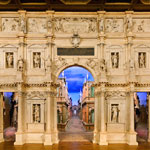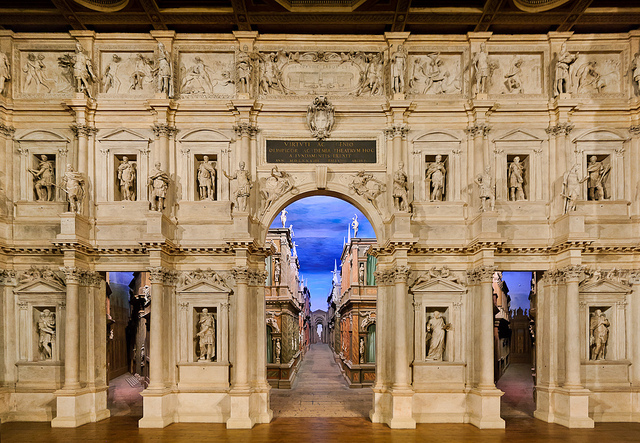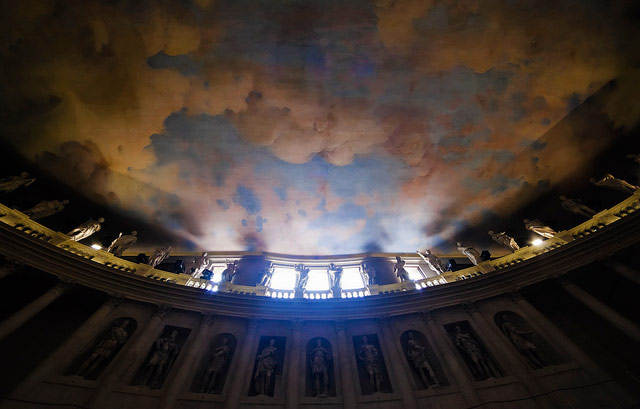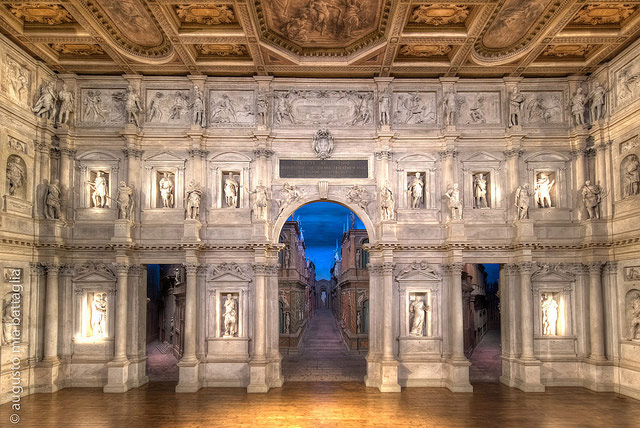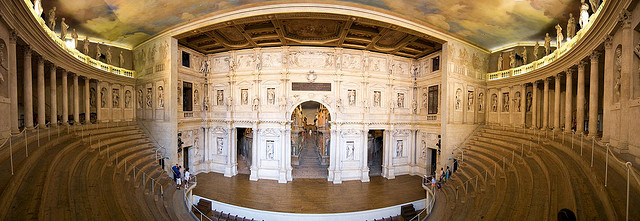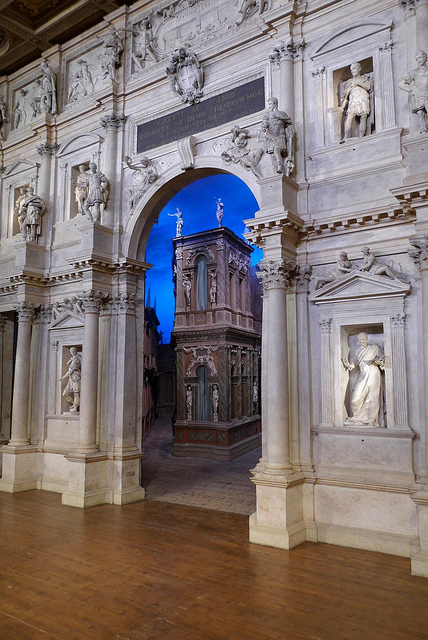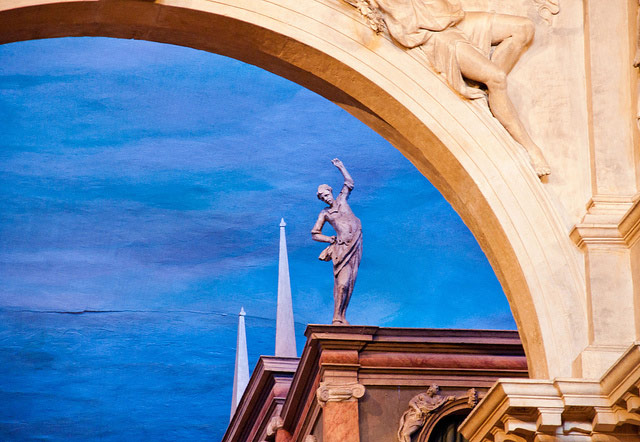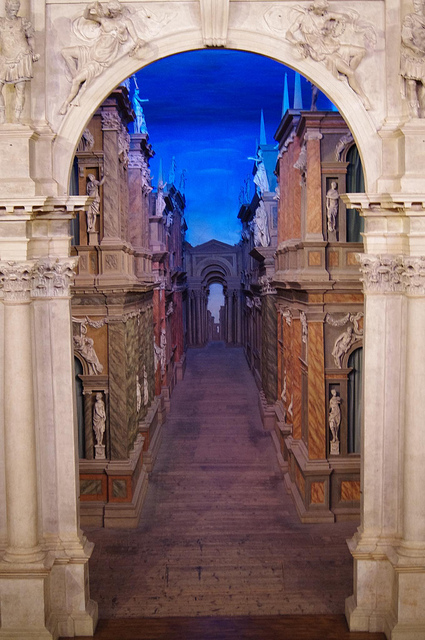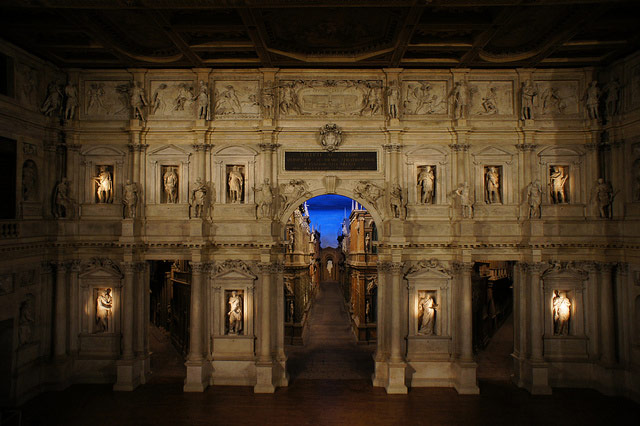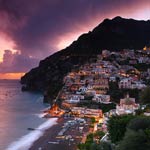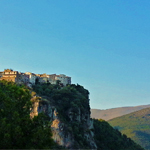The Teatro Olimpico in Vicenza: Palladian architecture at its finest for the oldest enclosed theater in the world
The Teatro Olimpico (“Olympic Theatre”) in Vicenza is the oldest surviving indoor theater in the world. It is also one of only three Renaissance theaters still in existence, together with the Teatro all’antica in Sabbioneta and the Teatro Farnese in Parma. It was designed by the famous Italian Renaissance architect Andrea di Pietro, better known as Palladio. Constructed in 1580-1585, the Teatro Olimpico was one of his greatest masterworks and also his last work. It was not completed until after his death when his son Silla continued the works.
Palladio was an exceptionally gifted man who, although native to Padua, spent many years in Vicenza. The last great architect of the Renaissance, he developed his own unique style, known as the Palladian style or Palladianism, which combines the precepts of ancient art with contemporary concerns.
Typically, his style was more based on mathematical proportions rather than the rich ornamental style, characteristic of the Renaissance, and followed rigorous plans where simple, symmetrical forms predominate, but all in an extremely harmonious fashion. Palladio was often commissioned by wealthy noblemen to build residences in the Venetian countryside. A group of villas and buildings of Vicenza is now referred to as The Palladian City.
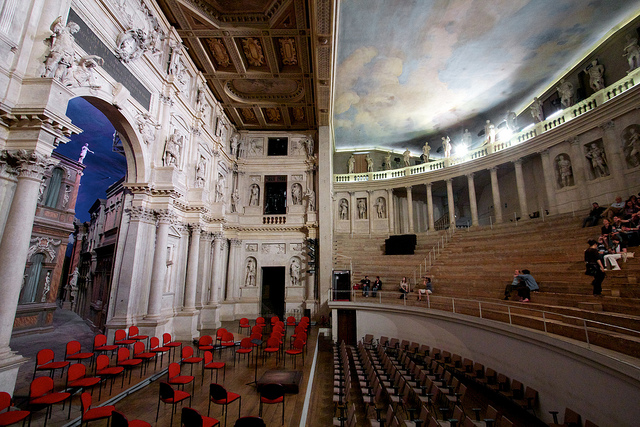
The Teatro Olimpico was built over the prisons of Palazzo del Territorio and is the Renaissance version of the theaters of antiquity. Although the theater is indoors, it is made to look like an outdoor Roman theater, with the tiers of seats laid out in a hemicycle.
The stage is one of the most beautiful ones still in existence, with its columns, superimposed niches and amazing perspectives created by the trompe-l’œil scenery. The trompe-l’œil was designed by Palladio’s pupil, Vincenzo Scamozzi, for the very first performance held in the theater, Sophocles’ Oedipus the King in 1585, and has remained in situ ever since, making it the oldest surviving stage set still in existence. It gives the illusion of long streets receding to a distant horizon, creating a perspective vista of the seven roads to the Greek city of Thebes.
Since 1994, the Teatro Olimpico, together with other Palladian buildings in and around Vicenza, has been part of the UNESCO World Heritage Site “City of Vicenza and the Palladian Villas of the Veneto”.
Photo credits (from top to bottom): José Agustín, Panoramic view by philip-brown; upper view by Marialba Italia; Augusto Mia Battaglia; Marco Bellucci, elGiango, Darren and Brad; Teatro Olimpico detail by Patrick Huber; dvdbramhall; Teatro Olimpico dark by barnyz.

